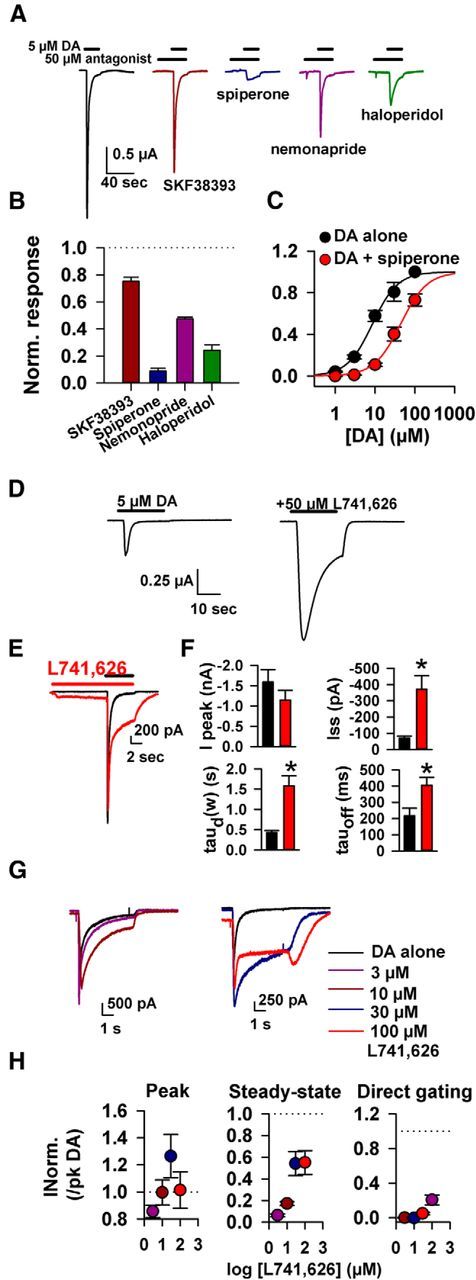Figure 3.

LGC-53 is sensitive to D2 ligands, which can positively or negatively modulate. A, Response of DA alone (5 μm; black trace) and in the presence of 50 μm of the indicated D1 and D2 receptor ligands from an oocyte expressing LGC-53. B, Summary of antagonist pharmacology from four to six oocytes. Antagonists were preapplied and then coapplied with DA, and peak current was normalized to DA alone. C, Spiperone (50 μm) shifted the DA EC50 to the right, suggesting a competitive interaction. Fits to the Hill equation exhibited a shift from an EC50 for DA of 8.6 μm in the absence of spiperone to 43.9 μm in the presence of 50 μm spiperone (n = 4 oocytes). D, The oocyte response to 5 μm DA in the absence and presence of L741,626 (50 μm) revealed potentiation. E, Response of a cultured striatal neuron expressing LGC-53 to 30 μm L741,626 preapplied and then coapplied with 30 μm DA (red trace). A baseline DA response is shown in black. F, Summary of the effect of L741,626 on 30 μm DA-gated LGC-53 currents in striatal neurons. Colors as in E. Measurements were made of peak current (Ipeak), steady-state current (Iss), the weighted desensitization time constant [taud(w)], and the time constant of deactivation (tauoff), measured during agonist washout. *p < 0.05. G, H, Concentration–response characteristics for the effects of L741,626 on responses to 30 μm DA transfected in striatal neurons; n = 6–7). L741,626 at the indicated concentrations was preapplied for 10 s before co-application with DA. The summary in H is color coded to traces in G.
